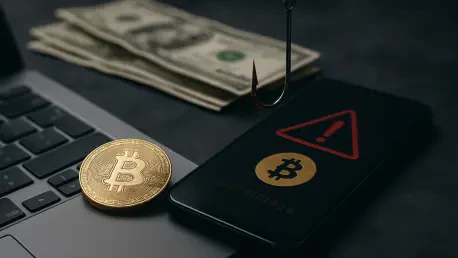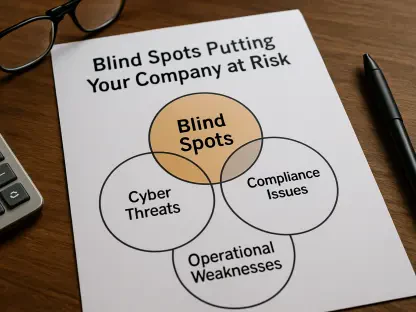A Stark Opening: A Hook, A Question, And A Phone That Wouldn’t Stop Ringing
One deceptive mobile ad featuring AI-forged endorsements triggered months of scripted calls, new bank logins, device purchases, and staged money movements that stripped an 82-year-old of £35,000 and calm. The question that followed—how did three separate frauds reach the same person in just 18 months—exposed a polished ecosystem that thrives on attention, patience, and the illusion of care.
The first blow began with celebrity faces that never consented to the pitch. Public figures such as Sir Keir Starmer, Piers Morgan, and Martin Lewis appeared on Eddie Rushe’s phone, lending borrowed authority to an “opportunity” that seemed safe and smart. On the other end waited a persuasive adviser called Sophie, who called daily and sometimes twice a day, drawing him step by step into a managed routine that looked like financial guidance and felt like help.
The second and third blows came later, after the shame set in and disclosure lagged. Details from the first scam likely traveled across borders, placing Eddie on a list that would be resold and recycled. New callers promised to recover what was lost; instead, they pulled another £20,000, leaving a family to contend with stress, a stroke, and a phone that still rang with offers to “fix” the past.
Why This Story Matters Now: Context, Trends, And Rising Risks
AI is supercharging the oldest fraud tactic in the book: social proof. Deepfake-style ads and voice-ready scripts make bogus endorsements look and sound like the real thing, giving scammers a shortcut to trust that used to take weeks to earn. The sheen of crypto adds a modern gloss, making the pitch feel current, exclusive, and just plausible enough to override instincts.
Older adults and those less comfortable with technology face particular risk in this environment. Confident voices, professional websites, and dashboards that show “growth” can overwhelm skepticism, especially when contact is frequent and framed as personal coaching. Reassurance that funds are protected or ring-fenced often seals the deal, even when returns are labeled low-risk and high-yield—language that seasoned investigators call the evergreen warning sign.
The scale is not abstract. UK Finance reported £629.3 million stolen through scams and payment fraud in the first half of 2025, up from the previous year’s first half. Investment and crypto-related schemes remained persistent drivers, with criminals coordinating outreach across social platforms and messaging apps. The trend line pointed toward more sophisticated scripts and faster conversion from ad to transfer.
How The Scam Machine Works: Playbooks, Tech Layers, And Institutional Gaps
The grooming starts with repetition. Frequent calls create familiarity, which then becomes dependency. Advisers like “Sophie” guide targets through a sequence: close a longstanding account, open a new one with a “clean” history, buy a laptop to manage “holdings,” and snap ID photos to verify access across “client portals.” Each step deepens control while nudging victims away from safeguards that a bank or a relative might provide.
The transfers are staged to avoid alarms. Funds move in increments through multiple accounts—sometimes newly created, sometimes linked to online banks—before leaving for wallets or exchanges that cannot be easily reversed. Once the largest sum shifts, the line goes dead. Silence is not an accident; it is the logical end of a script designed to collapse accountability and erase trails of conversation.
Technology finishes what persuasion starts. AI-spun ads route users from social feeds to sleek landing pages, then onward to handoffs with “advisers.” Faces of trust are instrumentalized without consent, and fake accreditations lend gravitas. According to veteran scam-baiters, these operations function like syndicates, with teams dedicated to advertising, onboarding, payments, and aftercare—“aftercare” being the resale of victim data to maximize returns.
Institutions face tough friction points. Multiple new accounts in quick succession, unusual transfers to first-time payees, and rapid device changes are classic red flags. Banks, platforms, and regulators could intervene earlier with stronger velocity controls, more prominent warnings, and mandated pauses for high-risk transfers. Families, too, are part of the safety net, yet the system often relies on individuals to self-identify when embarrassment keeps them quiet.
Voices And Evidence: From Living Rooms To Investigators’ Desks
Inside Eddie’s home, trust formed “one call at a time.” He described a routine in which Sophie’s daily guidance felt like mentorship: “She sounded like she cared.” After hundreds of calls and step-by-step walkthroughs, the day came when £13,000 moved, and the caring voice vanished. Three months later, he suffered a stroke after a fall, which his son Michael linked to stress and the secrecy that preceded the confession.
Michael conveyed the toll plainly: “The shame ate at him. The calls didn’t even stop—they just changed tone.” He argued that banks should have flagged the pattern long before the losses mounted, noting the sequence of new accounts, ID photos, and escalating transfers. He is now pressing the case with the Financial Ombudsman Service, seeking clarity on what protection vulnerable customers can reasonably expect.
Law enforcement guidance remains blunt: if the offer promises high returns with little or no risk, it is almost certainly fraud. Consumer advocates push the simple mantra—“Stop. Check. Report.”—urging people to verify using official sites, known numbers, and independent sources. The most consistent advice is to pause before moving money and to speak with a trusted person not connected to the pitch.
Scam-baiter insights add texture. “Anyone can fall victim,” said one investigator with years of experience infiltrating call centers. “They sound legitimate because they practice sounding legitimate.” Scripts, fake certifications, and high-profile sponsorships are standard issue, while cross-border data brokering keeps targeting fresh. UK Finance data underscored the stakes, showing losses up in 2025 and sustained pressure from investment and crypto scams.
What To Do Next: Practical Frameworks For People, Families, And Banks
A personal safety framework helps reintroduce friction. Start with a hard rule: no same-day transfers, ever. Verify independently by using official websites and phone numbers found without clicking ads or texted links. Track the promised path of funds: which institution, what account, which country. Refuse device control and do not share ID images with unknown parties, even for “verification.”
Families can build simple guardrails before a crisis. Set a “trusted contact” norm for large financial moves, create a code word for pressure situations, and agree on a no-secrets rule for money requests. Teach ad hygiene: do not click; navigate independently to banks, regulators, and known platforms. These steps sound small, but they interrupt scripts that rely on speed and isolation.
Banks and platforms can make protections the default, not an option. Enable enhanced warnings, payment locks, and velocity limits for new or high-risk payees. Ask institutions to flag first-time transfers and device changes for accounts with recent profile edits. Report suspicious ads and accounts, and document every step—screenshots, call logs, transaction histories—so recovery teams have a trail to work with if a case escalates.
For those already targeted or hit, a rapid response still limits damage. Freeze transfers, notify bank fraud teams, and file police reports immediately. Preserve evidence, then contact the Financial Ombudsman Service and relevant regulators. Seek support beyond finances—medical checkups, mental health care, and community resources matter when stress and shame compound harm. In Eddie’s case, disclosure came late, but it started a path toward help that had been missing when the calls felt most convincing.
In the end, the path forward rested on three habits that could be practiced by anyone: slow down, verify independently, and involve another person before money moved. The tools to resist had been available—mandated pauses, family check-ins, and bank-level prompts—and the institutions around victims had been positioned to nudge earlier. As losses rose and scripts improved, the next step had been clear: build frictions into the system and into daily decisions, because fraud that sounded caring had thrived on urgency, confidence, and silence.









